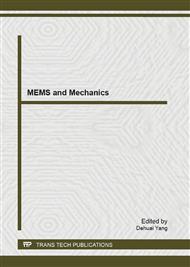[1]
Hassan Ghasseni and Parviz Ghadimi, Numerical Analysis of the High Skew Propeller of an Underwater Vehicle J. Marine Sci. Appl., 10 (2011) 289-299.
DOI: 10.1007/s11804-011-1071-4
Google Scholar
[2]
Yang QF, Wang YS, Zhang ZH, Assessment of the Improved Cavitation Model and Modified Turbulence Model for Ship Propeller Cavitation Simulation, Journal of Mechanical Engineering, 48(2012)178-185. (in Chinese)
DOI: 10.3901/jme.2012.09.178
Google Scholar
[3]
Prachakon K et al, Application of Nonlinear Turbulence Models for Marine Propellers, ASME J. Fluids Eng. 132(2010) 041302.
Google Scholar
[4]
Lindau J et al, Propeller Cavitation Breakdown Analysis, ASME J. Fluids Eng. 127(2005) 995-1002.
Google Scholar
[5]
Shin H R andTakafumi K, Propeller cavitation study using an unstructured grid based Navier-Stokes Solver, ASME J. Fluids Eng. 127(2005) 986-994.
DOI: 10.1115/1.1989370
Google Scholar
[6]
Rickard E B and Goran B, Implicit LES predictions of the cavitating flow on a propeller, ASME J. Fluids Eng.132(2010) 041302.
Google Scholar
[7]
Liu Y et al, URANS Computation of Cavitating Flows around Skewed Propeller, Journal of Hydrodynamics 24(2012) 339-346.
DOI: 10.1016/s1001-6058(11)60253-9
Google Scholar
[8]
Bin Ji, Xian wu Luo, et al., Unsteady Numerical Simulation of Cavitating Turbulent Flow around a Highly Skewed Model Marine Propeller, ASME J. Fluids Eng. 133(2011) 011102.
DOI: 10.1115/1.4003355
Google Scholar
[9]
Singhal, A. K., Athavale and M. M., Li, H. Y., Mathematical Basis and Validation of the Full Cavitation Mode, ASME J. Fluids Eng. 124(2002) 617-624.
DOI: 10.1115/1.1486223
Google Scholar
[10]
Kubota A, Kato H, A New Modeling of Cavitating Flows: A Numerical Study of Unsteady Cavitation on a Hydrofoil Section, J.Fluid Mech. 240(1992) 59-96.
DOI: 10.1017/s002211209200003x
Google Scholar
[11]
Brennen C E, Cavitation and Bubble Dynamics, Oxford University Press, 1995, Oxford.
Google Scholar
[12]
Markatos N. C., and Singal A K, Numerical Analysis of One-Dimensional, Two-Phase Flow a Vertical Cylindrical Pump, Adv. Eng. Software 4(1982) 99-106.
DOI: 10.1016/0141-1195(82)90032-8
Google Scholar
[13]
Zhu ZF, Fang SL, Numerical Investigation of Cavitation Performance of Ship Propellers, Journal of Hydrodynamics 24(2012) 347-353.
DOI: 10.1016/s1001-6058(11)60254-0
Google Scholar
[14]
Zhu ZF, Fang SL, Wang XY, Characteristic Analysis of Unsteady Viscous Flow around a Cavitating Propeller, Science China: Technical Science 53(2010) 1983-1992.
DOI: 10.1007/s11431-010-3226-y
Google Scholar


